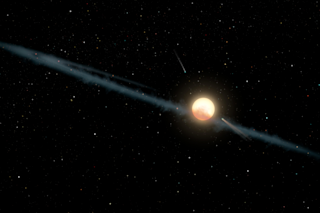About four years ago, one star gained notoriety when some astronomers suggested its weird light pattern could be signs of artificial “alien megastructures” blocking the star’s light. Though scientists generally say that clouds of gas and dust are most likely the culprit, the source of that gas and dust remains a mystery.
One possibility is that the star, formally called KIC 8462852, kidnapped an icy “exomoon” from its parent planet within the system, researchers reported earlier this month in the journal Monthly Notices of the Royal Astronomical Society. Scientists called these hypothetical escaped moons “ploonets.” And if such a moon was brought close to the star, the world would evaporate, creating dust and debris that obscures the star.
If the researchers are right, this would be one of the earliest signs of an alien moon we’ve ever observed.
Researchers nicknamed the star Tabby’s Star and Boyajian’s Star after the astronomer ...














